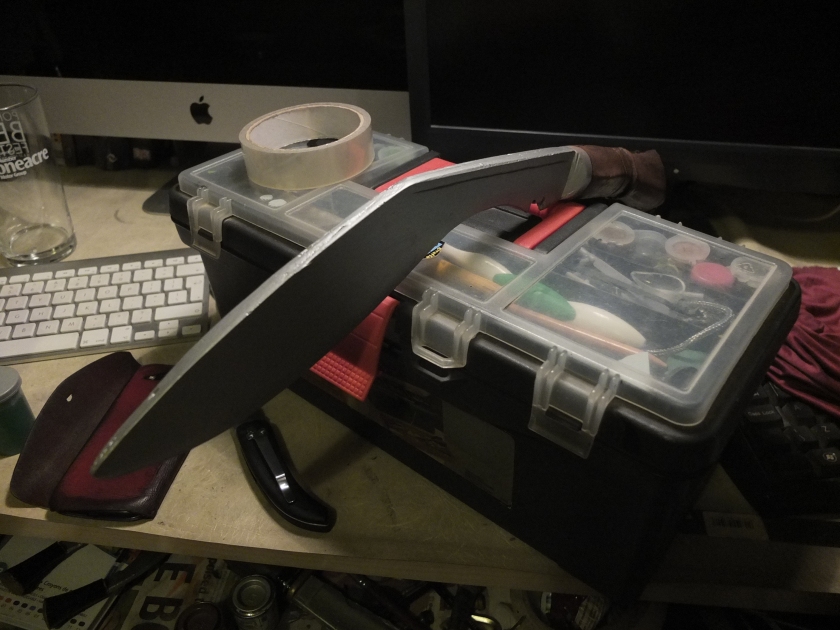The first job is to create a mould from which I can make a resin casting.


Mould making has been quite well covered elsewhere on the net by people much more expert than I so I shan’t go into detail here. I then poured a resin into the cavity which, when hardened produced a hard but semi flexible blade.


Much like an airfix model, once the flashing is removed it takes shape very quickly. A bit of filing and sanding here and there gets a smooth surface overall. I then sprayed it black as a base coat.

I then layered up the paints as I would for a plastic model.


Blue-tack makes a great masking tool, allowing a really clean, sharp edge to certain areas.

After an initial dark brown coat on the handle, I dry brushed a light brown paint over then top to create the impression of the light tropical woods used in older kukris.


A finishing touch was the varnishes, different types for different parts of the knife to give the correct finish for the materials the paint is impersonating.
I’ll be making a few of these as training knives and airsoft knives. Just email us on enquiries.vintageairsoft@gmail.com and join us on Facebook. Don’t forget you can follow the blog and get updates straight to your email inbox!
 Original resin model bottom, foam above.
Original resin model bottom, foam above.
















